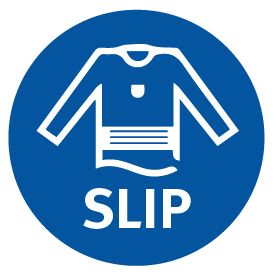Reduce the risk of skin cancer
Skin cancer is preventable. Using the five sun protective behaviours consistently when you are outdoors is your best defence from developing skin cancer.
Five ways to reduce your risk
 Slip on a shirt
Slip on a shirt
Wear a shirt that:
- provides a good level of skin coverage, including a collar and long sleeves
- is made from closely woven fabric in a dark colour (dark colours absorb UV radiation) and has an ultraviolet protection factor (UPF).
 Slop on sunscreen
Slop on sunscreen
Make applying sunscreen part of your everyday morning routine. Choose a sunscreen that is:
- broad-spectrum
- water-resistant
- sun protection factor (SPF) of at least 50
- not passed its used-by date.
 Slap on a hat
Slap on a hat
Choose a hat that shades the face, ears and neck, such as:
- a broad-brimmed hat
- legionnaire-style
- bucket hat.
Caps and visors are not recommended as they don’t offer enough sun protection for the face, ears and neck.
 Seek shade
Seek shade
When outdoors, on sunny or cloudy days, take cover:
- under trees or buildings
- under an umbrella or another portable shade structure.
 Slide on sunglasses
Slide on sunglasses
Choose sunglasses that:
- meet the Australian standards and have an eye protection factor (EPF) of 9 or 10
- cover the side of the eye area and fit closely to the face.
Check your skin
Most skin cancers can be successfully treated if they are found early. Without treatment some cancers can be deadly.
It's important to know your skin and to check it regularly, looking for any changes, especially in spots or moles. Visit your GP if you notice anything suspicious and ask about having a skin check.
Look for spots or moles that might be:
![]() Sore
Sore
- tender, itchy or bleeding
- doesn't heal within 6 weeks.
![]() Changing
Changing
- size
- shape
- colour
- texture.
![]() Abnormal
Abnormal
- looks different compared to other spots or moles.
![]() New
New
- appeared recently, especially if a person is over 40 years of age.